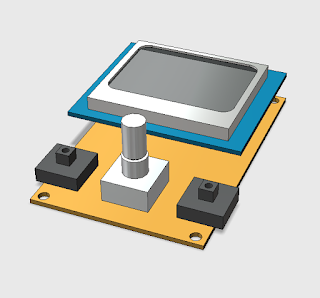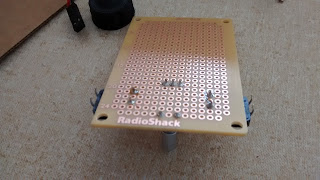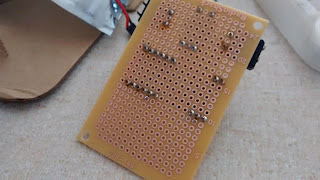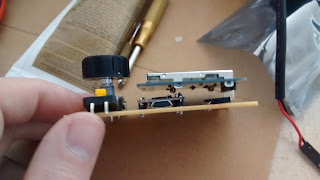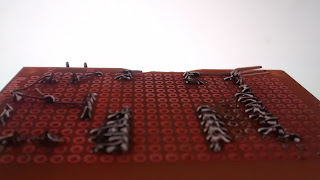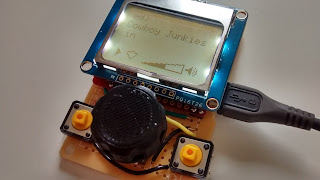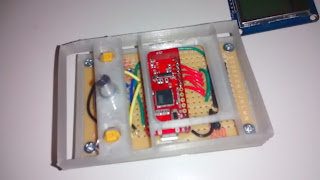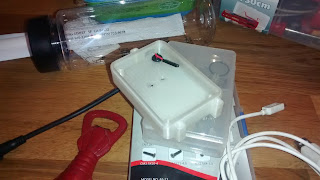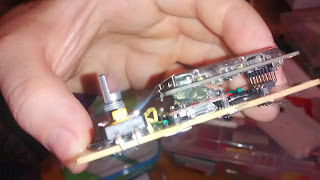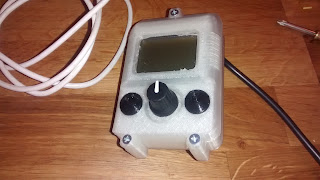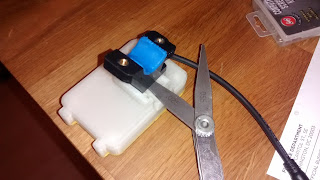Bicycles Again.
One of the other things I've been wanting for a long time is a covered, lockable storage box for bicycling around town. I have Givi cases for my motorcycles, and I find it indispensable to be able to store things securely while away from the vehicle. It's something I miss when biking.
So, I went to my local hardware store and found this small-ish plastic toolbox for about $15.

The first thing noticed is that the lid doesn't stay up on it's own. Very annoying.
The culprit turned out to be these plastic tabs intentionally appended to the hinges. What the hell? So, I shaved those off with a wood rasp, and now the lid will at least stay open when the box is level. But I may need to revisit that down the road.
So, on to the mounting. The Idea I came up with was to put key-hole slots into a plate, so that #6 sheet metal screws could be inserted, the whole box would then slide to lock the screws in place, and then the screws tightened down. The idea is that this way, it'll be easy to remove the box when necesary, but you have to be able open the box to remove it from the bike rack.
I'm doing this kindof quick-and dirty. So I kinda eyeballed the alignment of my bike rack (your typical aluminum rack). I drew the outline of the rack on the bottom of the box with a sharpie to help with this.
The top plate screws into the box with screws inserted from the bottom. I counter-sunk the screw holes so that the bottom of the box will be flush with the bottom plate. In hindsight, it would have been easier to put slots into the bottom plate. But, I didn't think of it.
Some pictures of the bottom plate, finally mounted.
The next challenge was to cut out the slots. If I were in less of a hurry, I'd have done all this on a mill or router. But then I'd have to deal with figuring out how to clamp or fixture on this box, which just seemed like kindof a pain in the ass. So I did it by hand: using the mounting plate as a template, I drilled holes along the slot, then filed and sanded to clean up the result.
Yeah, it's a little rough, but it should work for my purposes.
See? The bottom plate fits right on there. Next step was to mount the bottom plate onto the rack. Eyballed again. The bottom plate is secured with M6 bolts. I drilled a hole for one, and got it finger tight, and then just went for it with the 6mm drill for the second hole.
Well, that's enough progress for one afternoon. I have already printed a second set of mounting plates, so I should be able to finish this one up tomorrow. But I am out of M6 nuts / washers, so I need to at least make a trip to the hardware store.
The nice thing about this particular project, is that it's its own storage own box :)












































